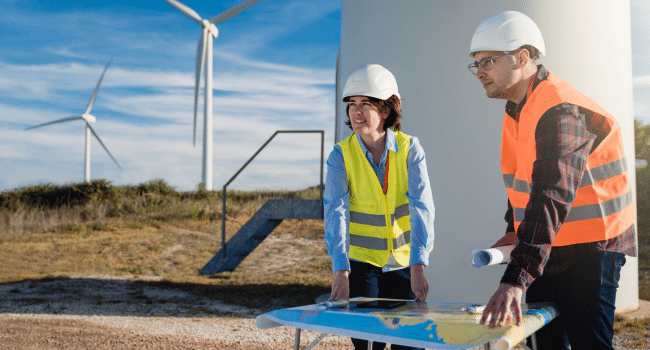Table of Contents
The use of renewable energy is on the rise, and the safety of people working in this sector continues to be a matter of concern. Sources of electricity such as solar panels and wind turbines not only take advantage of natural resources but also have their own electrical risks. An arc flash is one such risk; it is an explosive burst of energy resulting from a short circuit in an electrical system. It is imperative to recognize and manage these risks to ensure that renewable energy operations remain effective and safe.
Arc flash in renewable energy systems has the potential of negative impacts, including damaging expensive equipment and posing danger to human life. Which is why arc flash understanding and analysis is a critical part of designing and maintaining these systems.
But what does such an arc flash analysis entail and what difficulties do professionals encounter while discharging this responsibility? Let’s dive deeper.
Managing Arc Flash Risks in Solar Energy
Solar powered systems have gained a lot of popularity, being able to supply power to many. However, the electrical components that store and convert the sun’s energy are vulnerable to arc flashes. These are dangerous occurrences, which often result from high temperatures, dust, improper installations, etc.
Arc flash analysis in solar systems usually includes the identification of potential sources of faults and an evaluation of protective requirements. For instance, all electrical connections should be properly secured and workers should use protective devices to prevent the occurrence of an arc flash. Of course, it is not enough to avoid the occurrence of an arc flash, but to make sure that if it comes to it, the consequences are as minimized as possible.
Risk Management for Wind Turbine Operations
Another major type of renewable energy source is wind energy, which is characterized by tall structures and rotating blades on wind turbines. These systems harness the kinetic energy of the wind and use it to produce electrical energy. Wind turbines involve mechanical movement, electrical components, and outdoor environments, all of which renders them rather complex when it comes to electrical safety.
Concerning arc flash analysis in this case, a vital aspect is to have periodic checks and maintenance. Utilization of arc resistant switchgear is also important—to reduce chances of electric faults.
Safety Protocols and Standards for Renewable Energy Sources
Observing safety measures is essential to combating arc flashes in electrical systems. Some of the existing standards include the IEEE 1584 which provides guidance on the analysis and application of safety measures in electrical systems, including those in renewable energy systems. Such standards are crucial to ensure that the systems that are developed and implemented are not just efficient but also safe for use by the operators, as well as the environment.
According to these standards, renewable energy facilities may formulate safety procedures for the operation of their respective facilities. This may encompass day-to-day checks, staff education, as well as fire drills and practice evacuation. By implementing these protocols, the occurrence of arc flash related accidents can be minimized, thus ensuring that the working environment is made safer for all.
Read more on KulFiy
How Vital is Renewable Energy?
Solar Panel Installers Brisbane: Are They Worth It?
Why Switching to Renewable Energy Makes Good Business Sense?
